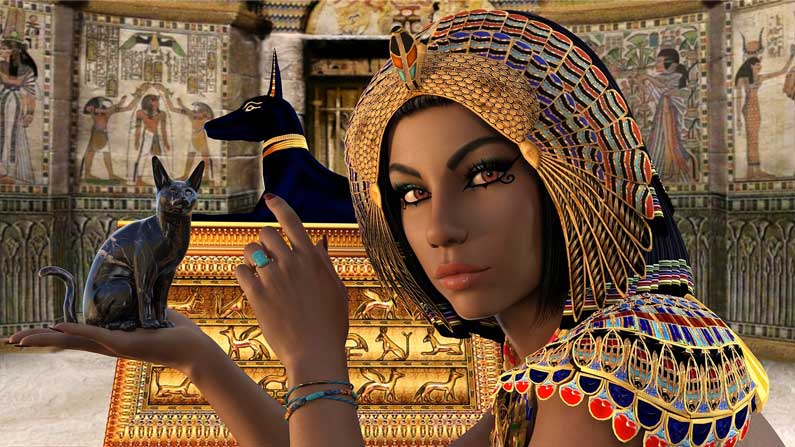How Cats Conquered Egypt
A Closer Look at the Battle of Pelusium
Ancient Egyptians revered all forms of life. They were a largely vegetarian or pescatarian society, but when they did eat meat they gave thanks for the sacrifice. Wildlife was respected, and pets (particularly that of cats) were well cared for and honored. Cats appeared frequently throughout their culture from art to religious iconography and was closely associated with the goddess Bastet. Bastet was represented as a cat in a seated pose, or as a woman with the head of a cat.
To kill a cat was punishable by death
Bastet was known to have a dual nature–one of a nurturing mother and also as a vengeful god. One way to incur her wrath was by causing harm to cats. In fact, according to Herodotus, to kill a cat was punishable by death. He further claimed that Egyptians would risk their lives to save a cat in a burning building.
Cats were often mummified, likely after dying naturally, and placed in a sacred location. Herodotus claimed that the mummified remains of cats were adorned with jewelry, as people were.
Egyptian culture had flourished for approximately 500 years during the New Kingdom of Egypt, but at approximately 1069 BCE it began a steady decline likely due to a weak central government, civil war, and social instability. With this came a division of power among monarchs–allowing Nubian invaders to take advantage of Egypts cultural crisis.
Subjugated by the Nubians, the Egyptians were once again unified but they were weakened by repeated military advances by the Assyrians. After eventually falling to the Assyrians, the Egyptians no longer had the resources to resist the military might of the Persians that they would soon face.
Not wanting to incur the wrath of Bastet the Egyptians surrendered their position and were routed
After learning that the Persians were amassing their forces and preparing to attack, Pharaoh Psametik III found himself abandoned by his Greek allies and the military counsel of Phanes of Halicarnassus. Psametik III prepared the capital city of Memphis and a fortress at Pelusium, near the mouth of the Nile, for siege warfare.
Well provisioned, the Egyptians were able to stop all Persian advances when they attacked the fortifications at Pelusium. But the cunning Persian king changed tactics to take advantage of the Egyptians veneration for cats. He had images of Bastet painted upon the shields of his soldiers and positioned multiple kinds of animals including cats in front of his military lines.
Not wanting to incur the wrath of Bastet the Egyptians surrendered their position and were routed. Those soldiers who did not die on the field of battle fled to Memphis. After a short siege of the capital city, Memphis fell. Psametik III was captured and shortly thereafter executed.
I have used a lot of similar research as a foundation for my fictional writing. If you are interested in ancient battles during the time of Alexander the Great and dark historical fantasy, you will love Gates the Hours Keep.
Check this out if you want to know more about the Battle of Pelusium.
A Part Of The
Way Back Wednesday
Series
